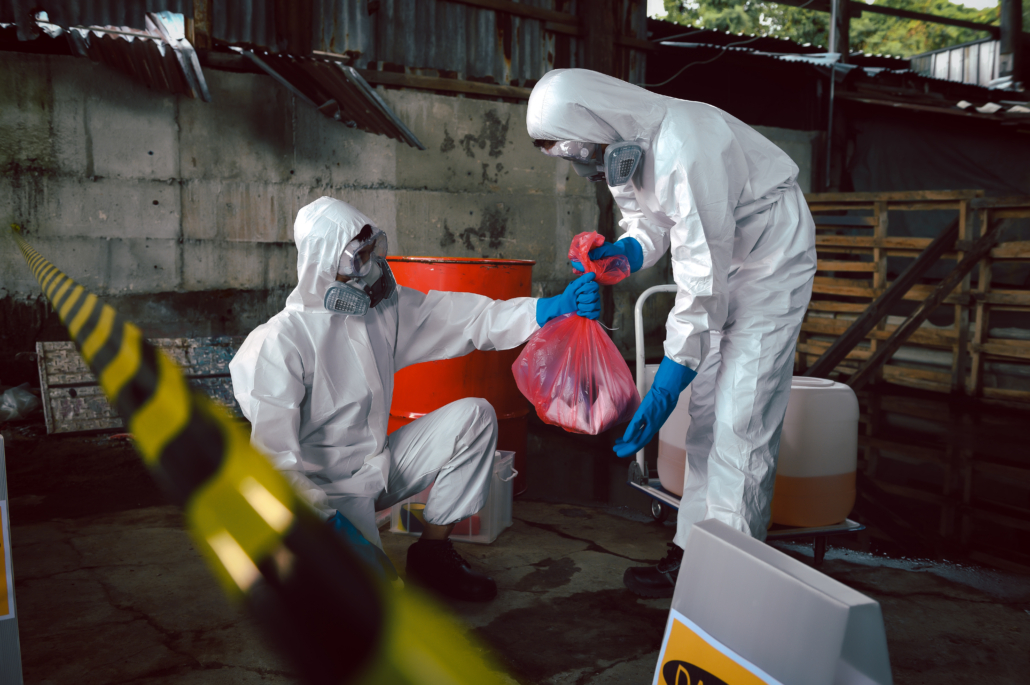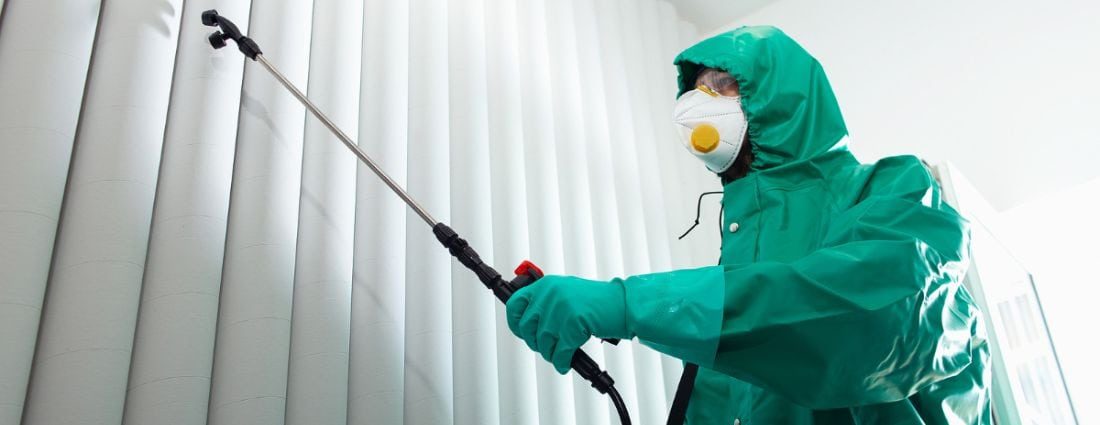Professional Biohazard Clean-up for Criminal Offense Scenes, Injury Incidents, and Polluted Rooms
In the realm of expert biohazard cleaning, meticulous interest to information and adherence to safety procedures are paramount. When confronted with the results of a criminal offense scene, injury case, or any type of infected space, the importance of appropriate clean-up can not be underrated. The dangers and intricacies related to biohazards require specific understanding and know-how to make certain effective remediation. As we explore the ins and outs of biohazard clean-up for these sensitive settings, a deeper understanding of the difficulties and vital procedures entailed will certainly emerge, clarifying the important duty of professional cleaning solutions in bring back security and comfort.

Value of Biohazard Cleanup
Biohazard clean-up adhering to criminal activity scenes and trauma cases is important for ensuring the safety of people and the atmosphere. When these cases occur, they commonly leave behind a selection of biohazards such as blood, physical liquids, and various other potentially contagious materials. These materials can harbor harmful microorganisms like infections and bacteria, presenting significant health threats if not effectively cleaned and sterilized.
Expert biohazard clean-up solutions are trained to manage these unsafe products safely and efficiently. They have the needed tools, such as individual protective equipment and specialized cleaning agents, to thoroughly decontaminate the affected areas. By delegating the cleanup to qualified experts, people can avoid direct exposure to dangerous virus and prevent the spread of contagious illness.
Furthermore, appropriate biohazard clean-up is necessary for securing the setting. Inappropriate disposal of biohazardous products can pollute dirt, water sources, and air, presenting a danger to wildlife and the ecological community. By following stringent clean-up protocols, specialists can ensure that biohazards are safely removed and taken care of based on guidelines, decreasing the risk of ecological contamination.
Kinds Of Biohazards Encountered
Different hazardous materials generally encountered in criminal activity scenes and injury incidents present substantial health and wellness dangers otherwise managed appropriately. Blood and bodily liquids are amongst the most typical biohazards discovered in these situations. These liquids can bring pathogens such as HIV, liver disease B and C, and other harmful microorganisms. In addition, tissues, body organs, and body components can also posture severe health dangers because of possible contamination.
An additional kind of biohazard frequently come across is sharp objects like needles, damaged glass, and various other products that can create injuries and transmit infections. Chemical dangers are additionally a worry, as criminal offense scenes might contain compounds like tear gas, pepper spray, or medication production products that require specialized handling and disposal procedures to stop additional harm.
Moreover, mold and mildew and bacteria development can happen precede where decay or extended direct exposure to dampness has occurred. These bacteria can release toxic substances and allergens right into the air, posturing respiratory risks to those exposed. Generally, biohazard cleanup professionals should be well-appointed and trained to properly handle these numerous kinds of harmful products to make sure the safety and security of themselves and others.
Devices and Protective Gear
When dealing with the important job of handling biohazards run into in criminal offense scenes and injury cases, the usage of proper equipment and protective equipment is extremely important to guaranteeing the safety and security of people included in the clean-up process. Specialized cleaning devices like biohazard anti-bacterials, sharps, and bags containers are required for the risk-free collection and disposal of polluted materials. Ensuring that all equipment is appropriately preserved, routinely inspected, and utilized according to safety and security standards is crucial in lessening the danger of direct exposure to biohazards during cleaning procedures.
Cleanup Process and Techniques
Complete and effective cleanup of biohazardous materials from criminal activity scenes and trauma incidents calls for careful interest to detail and adherence to stringent safety methods. The cleanup procedure typically involves numerous essential actions. Originally, the location should be assessed to establish the degree of contamination and the appropriate cleaning techniques required. Next off, all biohazardous materials, consisting of blood, physical original site fluids, and cells residues, have to be very carefully gotten rid of and taken care of according to local laws.
Following the removal of biohazardous materials, the damaged area goes through an extensive cleansing and disinfection procedure. This step includes making use of specialized cleansing representatives and equipment to make sure that all traces of contamination are gotten rid of. After cleaning, the area goes through rigorous screening to confirm that it is risk-free and complimentary of any staying biohazards.

Purification and Disposal Procedures
To make certain complete purification and correct disposal of biohazardous materials, following the careful cleanup process, certain procedures have to be thoroughly followed with stringent adherence to safety and security methods. Decontamination entails the removal or neutralization of pollutants to minimize the risk of direct exposure and spread of hazardous compounds. This process typically consists of cleansing, decontaminating, and sterilizing the afflicted location using specific devices and EPA-approved chemicals.
As soon as purification is finished, proper disposal of biohazardous materials is important to stop more contamination or injury. Biohazardous waste, such as bodily fluids or blood-soaked materials, need to be thoroughly gathered, packaged, and labeled according to regulatory guidelines. ATP testing. These materials are then moved to licensed facilities for disposal through appropriate channels, making certain conformity with neighborhood, state, and government laws

Conclusion
In conclusion, expert biohazard cleaning is vital for guaranteeing the secure and effective elimination of unsafe materials from criminal offense scenes, injury occurrences, and contaminated spaces. By using customized equipment, protective gear, and following proper cleaning processes and techniques, biohazard cleaning groups can effectively decontaminate and get rid of of biohazards, minimizing the threat of direct exposure and injury to people and the environment.
As we dive right into the complexities of biohazard cleanup for these sensitive settings, a deeper understanding of the obstacles and important procedures included will certainly emerge, losing light on the vital role of professional cleanup services in restoring security and peace of mind.
Expert biohazard cleaning services are educated to manage these harmful materials safely and successfully. By complying with strict cleanup protocols, specialists can make certain that biohazards are securely eliminated and disposed of in conformity with guidelines, reducing the danger of environmental contamination.
In general, biohazard cleaning professionals have to be skilled and well-appointed to successfully handle these numerous kinds of harmful products to make certain the security of themselves and others.
When resolving the crucial task of dealing with biohazards come across in criminal offense scenes and injury occurrences, the use of proper tools and protective equipment is critical to guaranteeing useful content the security of people included in the cleaning procedure.
Comments on “Professional Blood Cleanup: Ensuring Safe and Thorough Decontamination”